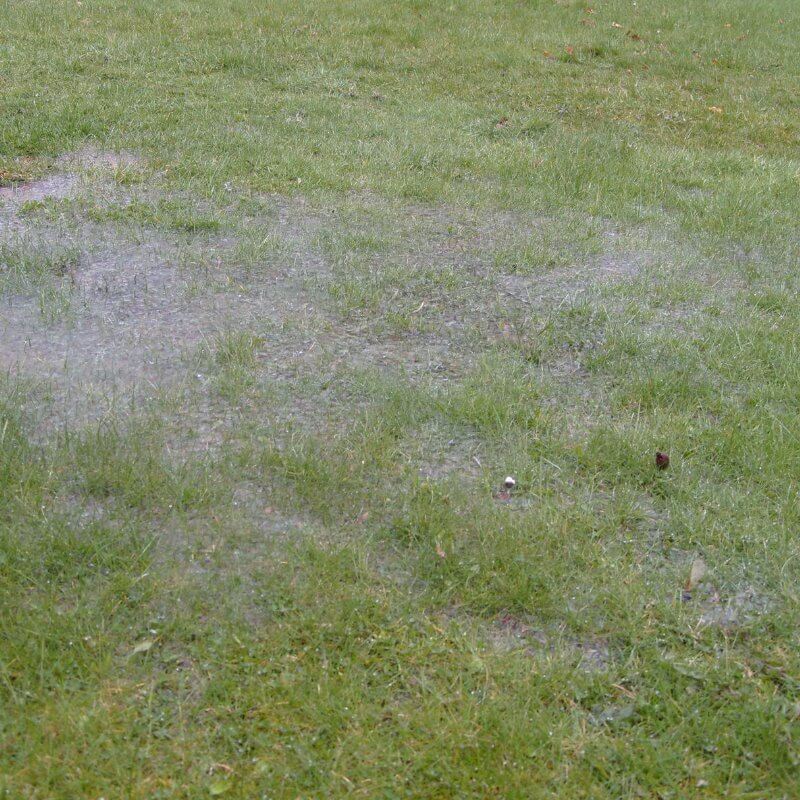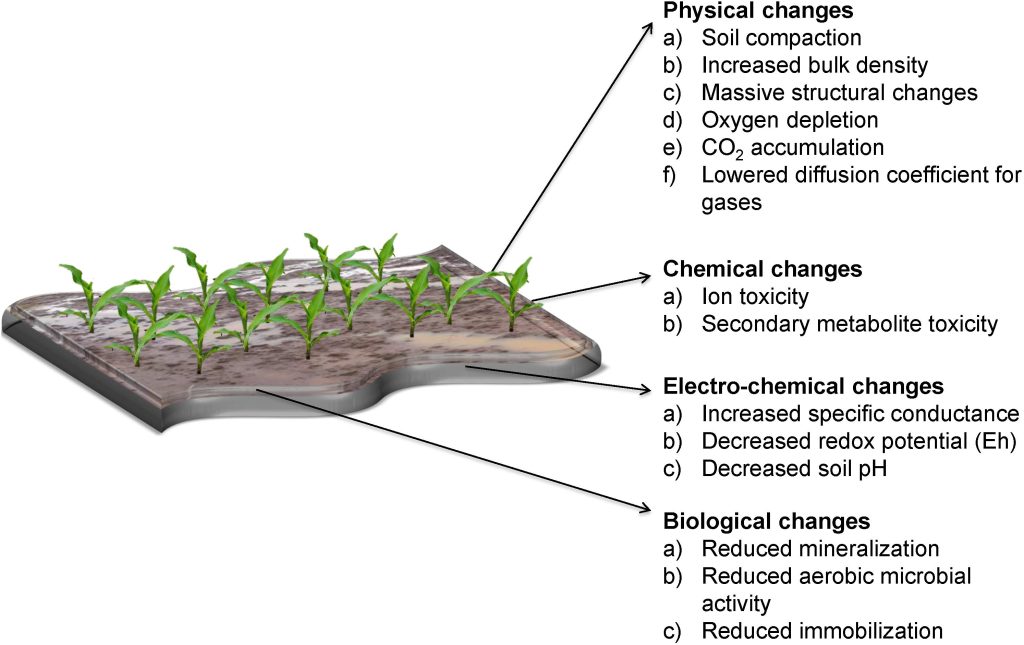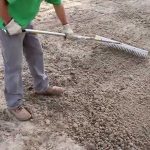Are your plants struggling to thrive despite your best efforts? You might be facing the twin troubles of waterlogging and soil compaction.
These common gardening challenges can leave your garden looking less than its best, and leave you feeling frustrated. But don’t worry! You can turn your garden into a lush, flourishing paradise with just a few simple steps. Imagine the vibrant colors and bountiful harvests that await you once you master the art of preventing these pesky problems.
Keep reading, and discover how to keep your plants healthy and your garden soil in perfect condition. Your plants deserve the best, and so do you!
Identifying Waterlogging Signs
Identifying waterlogging signs is crucial for maintaining healthy soil. Waterlogging can lead to various problems, including stunted plant growth and soil compaction. Understanding and recognizing these signs early can prevent damage and support sustainable gardening practices.
Spotting Pooled Water
Observe if water is pooling on the soil surface after rain. Pooled water indicates poor drainage, which can harm plant roots.
Checking Soil Texture
Feel the soil to check its texture. Waterlogged soil often feels sticky and heavy. This texture makes it difficult for roots to breathe.
Assessing Plant Health
Examine your plants closely. Yellowing leaves or wilting can signal excessive water in the soil. Healthy plants need balanced moisture levels.
Monitoring Soil Smell
Take note of any unusual smells from the soil. A sour or musty smell suggests anaerobic conditions due to waterlogging.
Evaluating Earthworm Activity
Look for earthworms in your garden. Low earthworm activity can indicate waterlogged soil. Earthworms thrive in well-drained environments.
Tracking Drainage Speed
Observe how quickly water drains after watering. Slow drainage is a sign of potential waterlogging. Efficient drainage is essential for healthy soil.

Preventing Soil Compaction
Soil compaction is a major challenge for gardeners and farmers. It reduces soil aeration, hinders root growth, and decreases water infiltration. Preventing soil compaction ensures healthy plant growth and boosts yield. Let’s explore effective methods to keep your soil loose and airy.
Use Organic Matter
Incorporate organic matter like compost or well-rotted manure. These materials improve soil structure. They provide a cushion against heavy machinery. Organic matter also enhances soil drainage. This keeps the soil loose and fertile.
Avoid Excessive Tilling
Frequent tilling can lead to soil compaction. It breaks down soil structure. Reduce tilling to maintain healthy soil. Use no-till methods or minimal tillage. These practices protect the soil’s natural structure.
Limit Foot Traffic
Walking on wet soil compacts it. Avoid unnecessary foot traffic, especially after rain. Use stepping stones or designated paths. This prevents soil from becoming compacted.
Use Raised Beds
Raised beds help prevent soil compaction. They allow better drainage and aeration. Raised beds also reduce the need for stepping on the soil. This keeps the soil loose and friable.
Plant Cover Crops
Cover crops like clover or ryegrass prevent compaction. Their roots break up compacted soil layers. Cover crops also add organic matter. They protect the soil surface from heavy rainfall.
Choose The Right Equipment
Use lightweight tools and machinery. Heavy equipment compacts soil quickly. Opt for tools that minimize soil disturbance. This helps maintain a healthy soil structure.
Effective Drainage Solutions
Prevent waterlogging and soil compaction by ensuring proper drainage. Use raised beds and permeable soil mixtures. Install drainage systems to direct excess water away from plants.
Ensuring your garden or farm has effective drainage solutions is crucial to prevent waterlogging and soil compaction. These issues can stifle plant growth and lead to poor yields. Implementing the right drainage methods can help maintain healthy soil and thriving plants. But how do you know which solutions will work best for your situation?1. Assess Your Soil Type
Start by understanding the type of soil you have. Sandy soils drain quickly, while clay soils retain water longer. Knowing this helps in choosing the right drainage solution. If you have clay soil, consider adding organic matter to improve its structure.2. Use Raised Beds
Raised beds are a fantastic way to enhance drainage. They elevate the soil, allowing excess water to flow away easily. I once switched my vegetable garden to raised beds and noticed significant improvement in plant health. Why not try it for your own garden?3. Install French Drains
French drains are excellent for redirecting water away from problem areas. They consist of a trench filled with gravel and a perforated pipe. This allows water to seep through the gravel and into the pipe, directing it away from your garden. It’s an effective solution for persistent waterlogged spots.4. Create Swales
Swales are shallow, broad channels designed to capture and redirect water. They’re particularly useful on slopes where water tends to run off quickly. By slowing down the flow, swales help water infiltrate the soil more effectively, reducing compaction and promoting healthier plants.5. Implement A Rain Garden
A rain garden is a planted depression that absorbs rainwater runoff. It’s not only functional but also adds beauty to your landscape. By strategically placing plants that thrive in wet conditions, you can create a natural drainage system. Have you considered how a rain garden might enhance your outdoor space?6. Regular Maintenance
Keep drainage systems clear of debris and silt buildup. Regularly check for blockages to ensure they function properly. Even the best systems require upkeep to maintain their effectiveness. How often do you inspect your garden’s drainage solutions? Effective drainage solutions require thoughtful planning and regular maintenance. By taking these steps, you can protect your soil from waterlogging and compaction, ensuring a vibrant and productive garden.
Maintaining Healthy Soil Structure
Maintaining a healthy soil structure is crucial for plant growth. It prevents waterlogging and soil compaction, which hinder plant development. Healthy soil ensures better drainage and root penetration, promoting robust plant health.
Understanding Soil Composition
Soil is made up of sand, silt, and clay. Each component plays a role in water retention and drainage. Knowing your soil type helps in managing its structure effectively.
Enhancing Soil Drainage
Improving drainage prevents waterlogging. Adding organic matter like compost increases soil porosity. This helps water move through the soil easily.
Compacted soil restricts air and water movement. Avoid walking on wet soil to reduce compaction. Use raised beds to keep soil loose.
Using Mulch And Cover Crops
Mulch protects soil surface from erosion. It maintains moisture levels and reduces compaction risks. Cover crops add organic matter, improving soil health.
Implementing Proper Water Management
Water management is key to avoiding waterlogging. Use drip irrigation to control water application. This method minimizes excess water in soil.

Conclusion
Preventing waterlogging and soil compaction benefits your garden’s health. Healthy soil supports strong plant growth. Use raised beds for better drainage. Regularly check soil moisture levels. Avoid heavy machinery on wet soil. Aerate compacted areas using a garden fork. Cover crops improve soil structure naturally.
These simple steps create a thriving garden environment. Remember, healthy soil equals healthy plants. Stay consistent with your soil care routine. Your plants will thank you with vibrant growth. Happy gardening!


